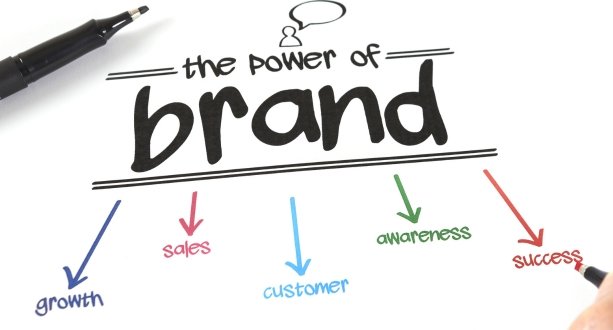What is Brand storytelling?
Brand storytelling is a marketing technique that involves telling a compelling and authentic story about a brand that resonates with its target audience. The idea behind brand storytelling is to create a deeper emotional connection between a brand and its customers. By sharing the history, values, and beliefs of a brand through a narrative, customers can relate to the brand on a personal level, building trust and loyalty.
Brand storytelling can take many forms, including videos, social media posts, blog posts, advertisements, and even product packaging. However, the most effective brand stories are those that are authentic and align with the brand’s values and mission. The story should also be compelling and engaging, capturing the attention of the target audience and leaving a lasting impression.
One of the key benefits of brand storytelling is that it helps to differentiate a brand from its competitors. In today’s crowded marketplace, consumers are bombarded with countless options for products and services. By telling a unique and compelling story, a brand can stand out and capture the attention of potential customers. Additionally, brand storytelling can also help to humanize a brand, making it more relatable and approachable.
Another benefit of brand storytelling is that it can help to build brand loyalty. By sharing the values and beliefs that drive a brand, customers can feel a deeper emotional connection to the brand. This emotional connection can lead to increased loyalty, as customers are more likely to continue supporting a brand that they feel a personal connection to.
Brand storytelling can also be used to build brand awareness and increase engagement. By creating compelling content that tells the story of a brand, it is possible to attract new customers and engage existing ones. Additionally, brand storytelling can help to increase social media shares and likes, as people are more likely to share content that they find interesting and engaging.
To create an effective brand story, it is important to start by understanding the target audience. What are their values and beliefs? What are their pain points and challenges? By understanding the target audience, it is possible to create a brand story that resonates with them on a personal level.
Once the target audience has been identified, it is important to develop a unique and authentic brand story that aligns with the brand’s values and mission. This can be done by highlighting the history of the brand, sharing customer success stories, or showcasing the people behind the brand.
Finally, it is important to communicate the brand story effectively. This can be done through a variety of channels, including social media, email marketing, and advertising. However, it is important to remember that the key to effective brand storytelling is to be authentic and genuine. Customers can spot a fake or inauthentic brand story from a mile away, so it is important to stay true to the brand’s values and mission.
Brand storytelling is an effective marketing technique that can help to build brand awareness, increase engagement, and build brand loyalty. By creating a compelling and authentic brand story, brands can stand out in a crowded marketplace and connect with their customers on a personal level. To create an effective brand story, it is important to understand the target audience, develop an authentic brand story that aligns with the brand’s values and mission, and communicate the brand story effectively.
How is storytelling used to strengthen a brand?
Storytelling is a powerful tool that can be used to strengthen a brand. By telling a compelling story, a brand can create an emotional connection with its audience, differentiate itself from competitors, and build brand loyalty. The art of storytelling has been used for centuries to communicate ideas, values, and beliefs, and its power remains just as strong today in the world of branding and marketing.
One way storytelling can be used to strengthen a brand is by helping to create a brand identity. A brand identity is a unique set of values, beliefs, and characteristics that define a brand and distinguish it from its competitors. By telling stories that align with its brand identity, a brand can reinforce its values and beliefs, and create a strong emotional connection with its audience.
For example, TOMS Shoes, a company that donates a pair of shoes to a child in need for every pair of shoes purchased, has built its brand identity around the idea of social responsibility. The company tells stories about the impact it has made on communities around the world, and how it is working to create a better future for all. By telling these stories, TOMS reinforces its commitment to social responsibility and creates an emotional connection with its audience.
Another way storytelling can be used to strengthen a brand is by creating a brand narrative. A brand narrative is a story that communicates a brand’s values, mission, and purpose. By creating a compelling brand narrative, a brand can differentiate itself from competitors and build a loyal customer base.
For example, Nike’s brand narrative is built around the idea of empowering athletes to achieve their goals. The company tells stories about the struggles and triumphs of athletes, and how Nike products have helped them to succeed. By creating this brand narrative, Nike has positioned itself as a brand that is dedicated to helping athletes achieve their full potential, and has built a loyal following of customers who share this passion.
In addition to creating a brand identity and brand narrative, storytelling can also be used to create brand advocates. Brand advocates are loyal customers who actively promote a brand and its products or services to others. By telling stories that resonate with its audience, a brand can create a community of brand advocates who are passionate about its products and services.
For example, Apple has built a community of brand advocates who are passionate about its products and services. The company tells stories about how its products have changed people’s lives, and how they are designed to make people’s lives easier and more enjoyable. By creating these stories, Apple has built a community of passionate brand advocates who are willing to promote its products and services to others.
Finally, storytelling can be used to create an emotional connection with customers. Emotions are a powerful driver of human behavior, and by telling stories that resonate with its audience, a brand can create an emotional connection that goes beyond the rational benefits of its products or services.
Coca-Cola has used storytelling to create an emotional connection with its audience for over a century. The company tells stories about sharing a Coke with friends and family, and how its products have been a part of people’s most memorable moments. By creating these stories, Coca-Cola has built a powerful emotional connection with its audience, and has become one of the most recognized and beloved brands in the world.
The role of storytelling in building a brand
Storytelling has been an essential part of human communication for centuries. People use stories to connect with others, share experiences, and convey emotions. Stories can also be a powerful tool in building a brand. In fact, many successful brands have used storytelling to create a strong brand identity and connect with their audience
One of the key benefits of using storytelling in branding is that it allows brands to create an emotional connection with their audience. When people hear a story that resonates with them, they are more likely to remember it and feel a personal connection with the brand. This emotional connection can lead to increased brand loyalty and customer engagement.
Another benefit of using storytelling in branding is that it can help brands differentiate themselves from their competitors. In today’s crowded marketplace, it can be challenging to stand out and capture people’s attention. However, by telling a unique and compelling story, brands can create a distinct identity that sets them apart from their competitors.
Storytelling can also be an effective way to communicate a brand’s values and mission. By sharing stories about the brand’s history, founders, or employees, brands can convey their core values and mission in a way that resonates with their audience. This can help build trust and credibility with customers who share those same values.
In addition to building an emotional connection and conveying a brand’s values, storytelling can also be used to showcase a brand’s products or services. By telling stories that highlight the benefits and features of their products or services, brands can create a more compelling and memorable message than traditional advertising methods.
There are many ways that brands can incorporate storytelling into their branding strategy. One popular approach is to create a brand story or narrative that guides all of the brand’s communications and marketing efforts. This story can include the brand’s history, values, and mission, as well as stories about the people behind the brand.
Another approach is to use storytelling in advertising campaigns or social media content. Brands can create short videos, social media posts, or blog articles that tell stories about their products or services, or highlight customer success stories. These stories can be shared across multiple channels and help to build a consistent and memorable brand identity.
One example of a brand that has successfully used storytelling in its branding strategy is Nike. Nike’s “Just Do It” campaign is one of the most iconic and successful marketing campaigns of all time. The campaign’s message of empowerment and determination was conveyed through stories of athletes overcoming obstacles and achieving their goals. By using storytelling to create an emotional connection with its audience, Nike was able to build a strong and lasting brand identity.
Conclusion
In conclusion, storytelling can be a powerful tool in building a brand. By creating an emotional connection with the audience, conveying a brand’s values and mission, and showcasing its products or services, storytelling can help brands differentiate themselves from their competitors and build a strong and loyal customer base. Brands can incorporate storytelling into their branding strategy in many ways, from creating a brand narrative to using storytelling in advertising campaigns or social media content. When done effectively, storytelling can be a game-changer for brands looking to create a lasting impact and connect with their audience.
Frequently Asked Questions
Storytelling helps to build brand awareness by creating a memorable and relatable narrative that resonates with the audience. It helps to capture the audience’s attention and engage them in a way that leaves a lasting impression of the brand.
The key elements of effective brand storytelling include a clear and compelling narrative, relatable characters, a well-defined setting, an emotional connection with the audience, and a call to action.
Some examples of successful brand storytelling include Nike’s “Just Do It” campaign, Coca-Cola’s “Share a Coke” campaign, and Airbnb’s “Belong Anywhere” campaign. These campaigns used storytelling to create an emotional connection with their audience and to communicate their brand values effectively.
Storytelling helps to build brand loyalty by creating a connection between the brand and its audience that goes beyond the product or service being offered. It helps to establish a sense of trust, authenticity, and emotional investment that keeps the audience coming back to the brand.
A brand can use storytelling to differentiate itself from competitors by creating a unique and memorable narrative that communicates its values, mission, and vision. By doing so, it can establish itself as a distinct and recognizable brand that stands out in a crowded marketplace.



